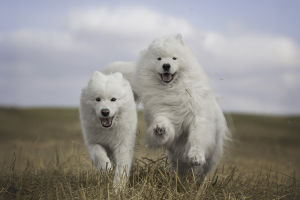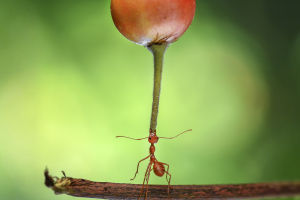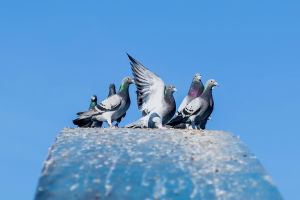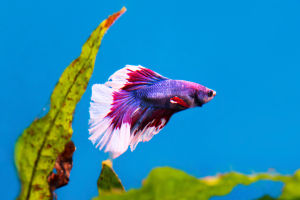
When we decide to bring home another dog, we often face concerns, especially about potential conflicts between the new and existing members.
After all, we frequently hear about or witness fights in multi-dog households. However, with a polite, gradual, and ritualistic introduction, we can effectively avoid these unnecessary conflicts.
What if my dogs fight?” This is a common issue in multi-dog households. Some online opinions suggest letting the dogs fight to establish a family hierarchy and determine a winner. However, this simplistic and brutal method not only risks escalating the conflict but also lacks practical help. So, what should we do? The key lies in skill and patience. Here are the specific steps:
Isolation Phase
When a new member joins, even during the first encounter, it may feel uneasy due to nervousness. To ensure stability on both sides, we should avoid direct face-to-face contact. To achieve this, we can prepare a spacious cage or pen to house the new member separately. Ideally, families with the means should let the new and existing members live in separate rooms to prevent the new member from potentially spreading unknown diseases to the healthy original inhabitants.
To achieve this, we can prepare a spacious cage or pen to house the new member separately. Ideally, families with the means should let the new and existing members live in separate rooms to prevent the new member from potentially spreading unknown diseases to the healthy original inhabitants.
Dogs have an extremely keen sense of smell. Although the cage or pen physically separates them, the dogs can still familiarize themselves with each other's scents through sniffing. Therefore, during the initial meeting, we often see both dogs frequently sniffing each other, and even though sometimes accompanied by threatening huffs, the cage can effectively prevent further aggressive actions.
At the same time, to ensure the new member can adapt and feel comfortable, we need to prepare a set of dedicated tools inside the cage. This isolation period usually lasts for about a week. During this time, closely observe the reactions of both dogs to ensure they are no longer in a state of nervous, low-level threatening. Once this state is relieved, parents can gradually increase the time they spend sniffing each other and licking each other through the cage, helping them to gradually become familiar with one another.
Through the guidance of these two stages, the dogs feel a sufficient sense of security. Since throughout the process, neither side has encroached on the other's living resources, there has been no unreasonable allocation of resources, thus avoiding the potential for conflict. These measures undoubtedly lay a solid foundation for friendly coexistence.
When the cage door finally opens, you will find that the dogs' most natural reaction is to chase each other, sniff each other's scents, and start playing. However, more dominant dogs may fight over toys during play.
Face the Challenge of Close Contact
With the cage open, physical contact between the two dogs is inevitable. During this stage, we need to pay special attention:
When the dogs first have close contact, it is recommended to put leashes on them to ensure safety.
Ensure that each dog has its own dedicated food and water bowls to avoid conflicts over resources.
The owner should maintain a fair attitude but also closely monitor the emotional changes of the original resident.
During the dogs' interactions, sometimes it may be difficult for parents to distinguish between play and fighting. In fact, there are significant differences between these two behaviors. Puppies begin socialization around three weeks old, which is usually manifested in play and biting with their siblings. This level of biting is not fierce; the dogs' facial expressions appear to enjoy it, with relaxed muscles and excitedly wagging tails. In addition, they will lick each other, play on top of each other, and chase each other.
Fighting, on the other hand, shows completely different characteristics, such as a tense atmosphere, stiff bodies, and drooping tails. During a fight, the muscles, especially the jaw, of both parties are noticeably tense, they face each other and growl lowly, ready to engage in battle at any moment. The fighting actions are quick and fierce, and it is difficult to separate them. This situation requires high vigilance from parents.
Therefore, during the initial contact between the new and old members, it is crucial to put on leashes to prevent any tragedy. During the dogs' play, we need to closely monitor their movements. If we notice signs of impending aggression, such as muscle tension and growling, we should immediately take action to distract them, such as making a sudden noise or throwing food. Then, quickly return the dogs to their cages and temporarily avoid face-to-face contact.
When conflicts arise between dogs, the execution time of the above steps needs to be extended and repeated until they can coexist peacefully. If such fighting continues to occur more than five times, it may unfortunately have to be told to the parents that these two dogs may not be able to get along peacefully. For their happiness, it is recommended to find a new home for the new member, which may be the best choice for both dogs.
Of course, in addition to the gender differences between male and female dogs, there are many other factors that may affect the peaceful coexistence of dogs. Therefore, when choosing a match, we should take into account a variety of factors to increase the likelihood of peaceful coexistence between dogs.
8 Tips on How to Make Two Dogs Become Friends
Video by PetBacker


